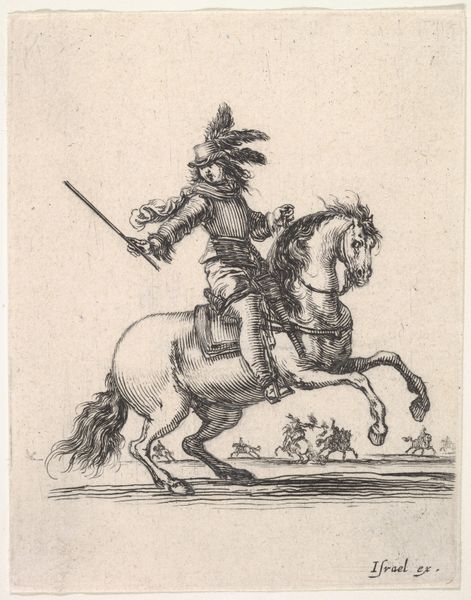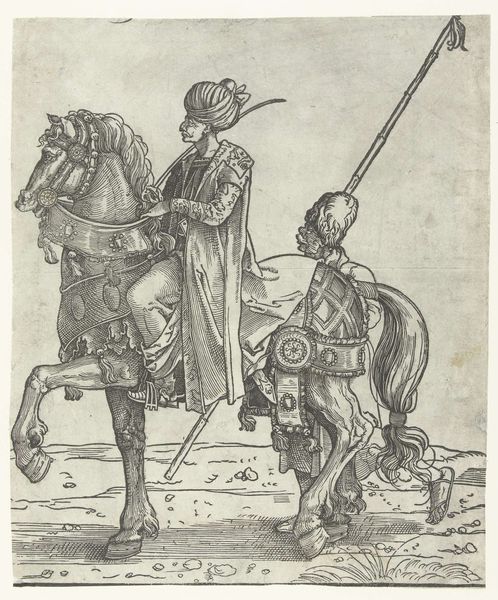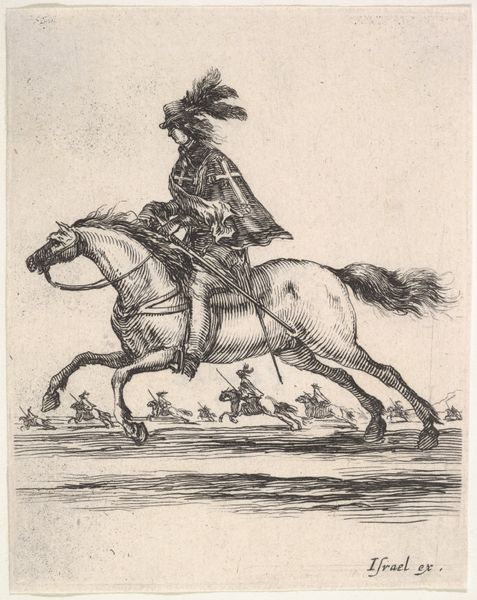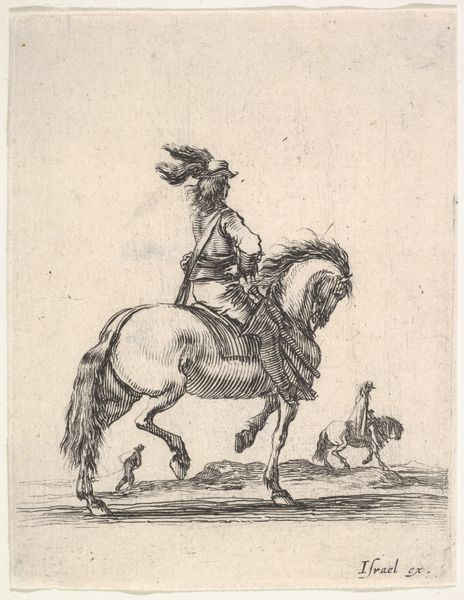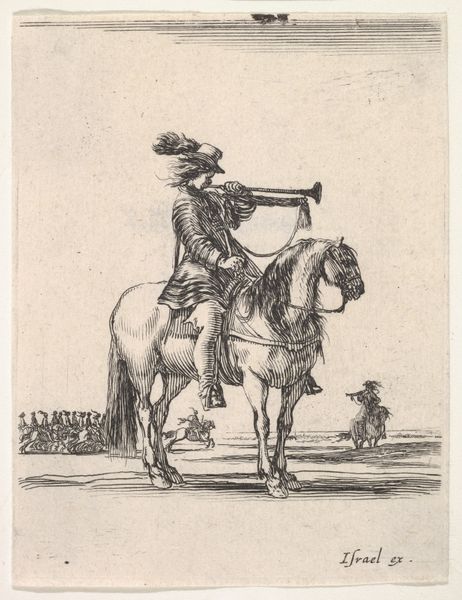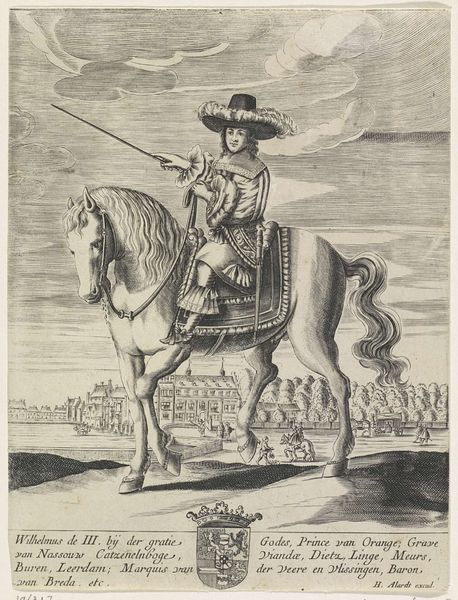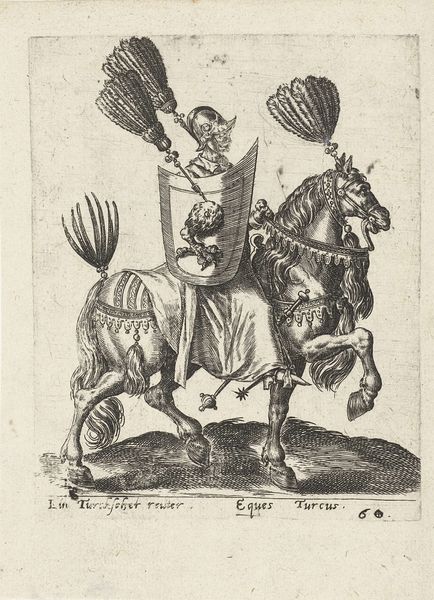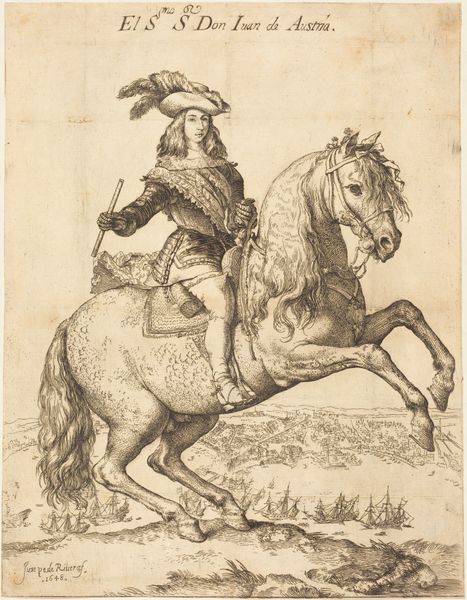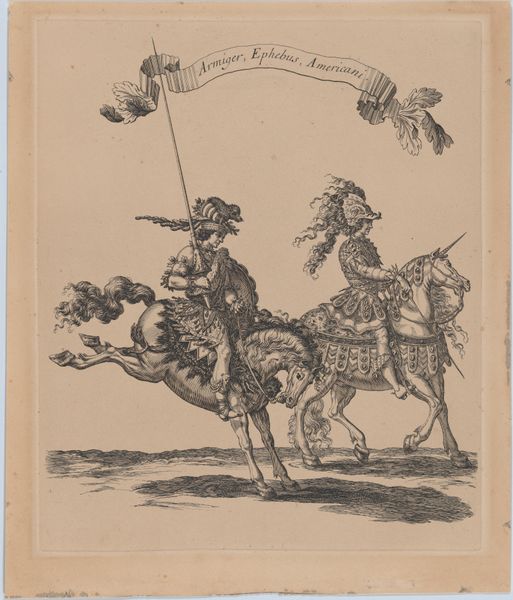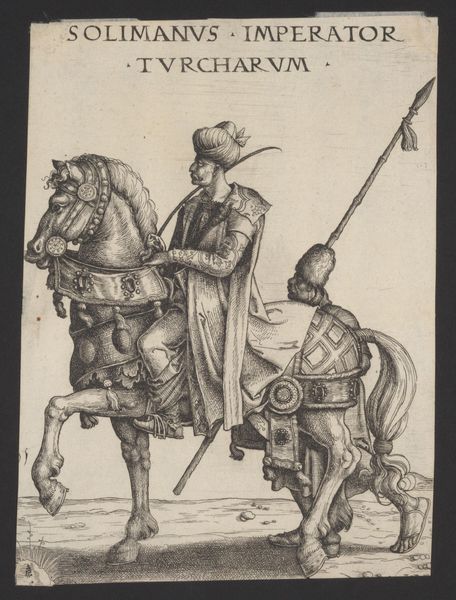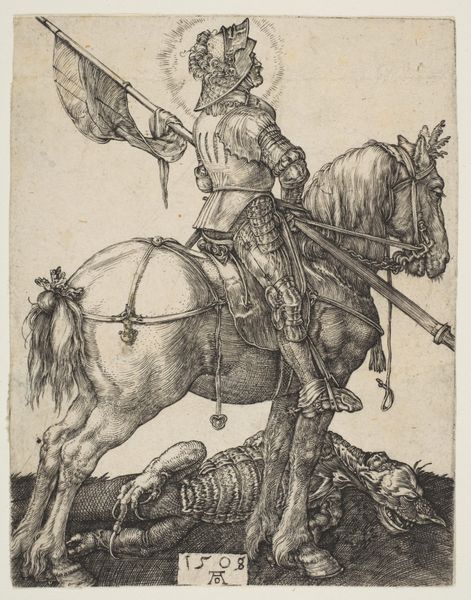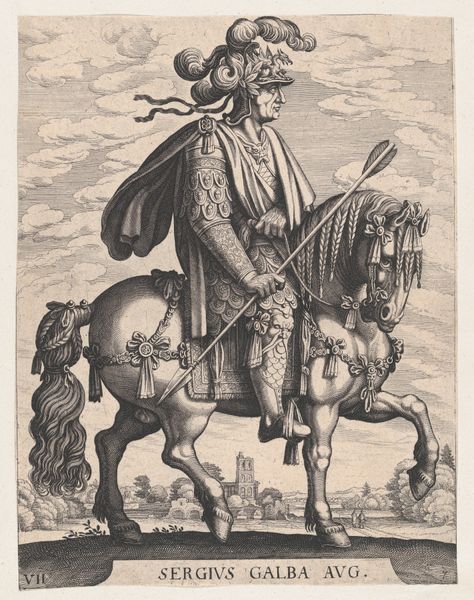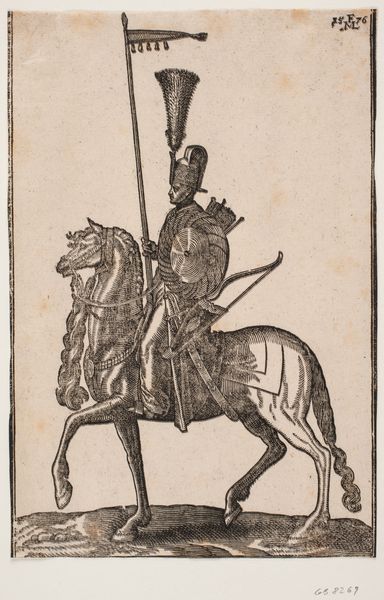
Bernardino Ricci, called il Tedeschino, atop a horse in center, riding towards the left, wearing a long robe, a cape, and a hat, holding a staff in his right hand, a putto holding the Medici coat of arms at bottom left, Florence in the background 1637
0:00
0:00
drawing, print
#
portrait
#
drawing
#
baroque
# print
#
horse
#
cityscape
#
history-painting
#
italian-renaissance
Dimensions: Sheet: 14 1/8 x 10 in. (35.8 x 25.4 cm)
Copyright: Public Domain
Curator: Stefano della Bella created this rather dashing print in 1637. It's housed here at the Metropolitan Museum of Art and it portrays Bernardino Ricci, or il Tedeschino, on horseback, set against a backdrop of Florence. Editor: My initial feeling is... drama! Look at that rearing horse, the flowing robe, the distant cityscape – it’s like a stage play. I imagine trumpets blaring. It also makes me a bit queasy, though. So much intricate detail could use some soft focus... but I guess that wouldn't fly in 17th century portraiture. Curator: Absolutely. And observe how the rearing horse and proud rider command attention, an assertion of status so common to Baroque portraiture. The putto at the bottom left holds the Medici coat of arms, further connecting the figure to power. Beyond mere representation, this functions as an allegorical elevation. Editor: He definitely *looks* like someone who knows he’s important. But what strikes me is how the composition links personal power with this cityscape. He's *riding* that Florentine power, literally. It's interesting to see how this Italian Renaissance plays with symbols like that. Does that staff he's holding carry specific weight, as well? Curator: Indeed. While some may view it merely as a riding crop or sign of authority, its placement directs our eye toward the receding Florence – and simultaneously mirrors the distant steeples of the city. This implies a spiritual link between the man, his position, and the city he ostensibly serves and governs. It unifies these concepts of worldly power and the heavenly seat, a visual unification that the population, attuned to symbols as they were at the time, would immediately recognize. Editor: You know, all this talk of symbols makes it easy to forget that this image had to be made by human hands. It reminds me of a dream I once had involving endless mazes constructed of pure light… The level of intricate detail Stefano della Bella packed in is, in and of itself, expressive! Curator: Precisely. Whether invoking civic authority, spiritual leadership, or dynastic inheritance, these symbols function less as overt claims and more as a persistent reminder of a particular world view that permeated public life. Editor: What a fascinating, if busy, encapsulation of an era. A symbolic assertion of a specific and now distant reality. Curator: Agreed. An opportunity to delve deep into cultural memory and the art of crafting influence through visual cues.
Comments
No comments
Be the first to comment and join the conversation on the ultimate creative platform.
